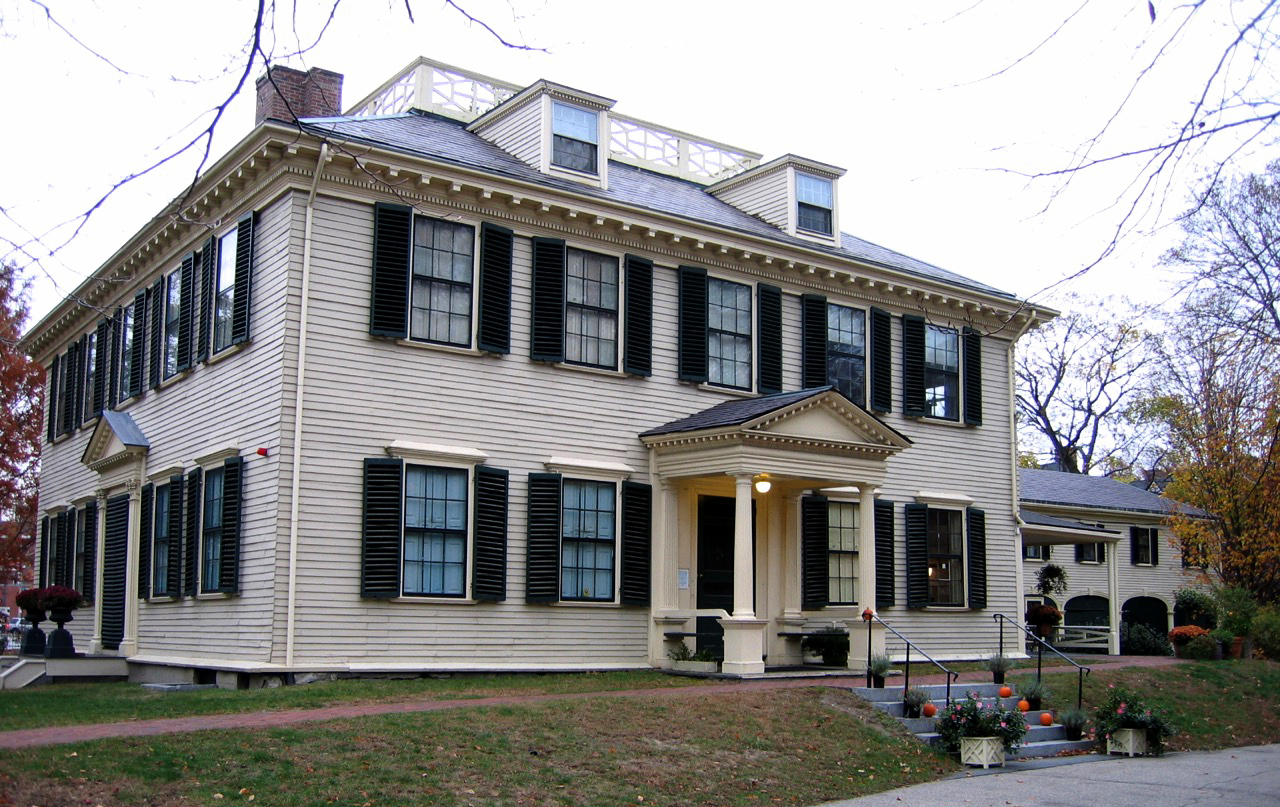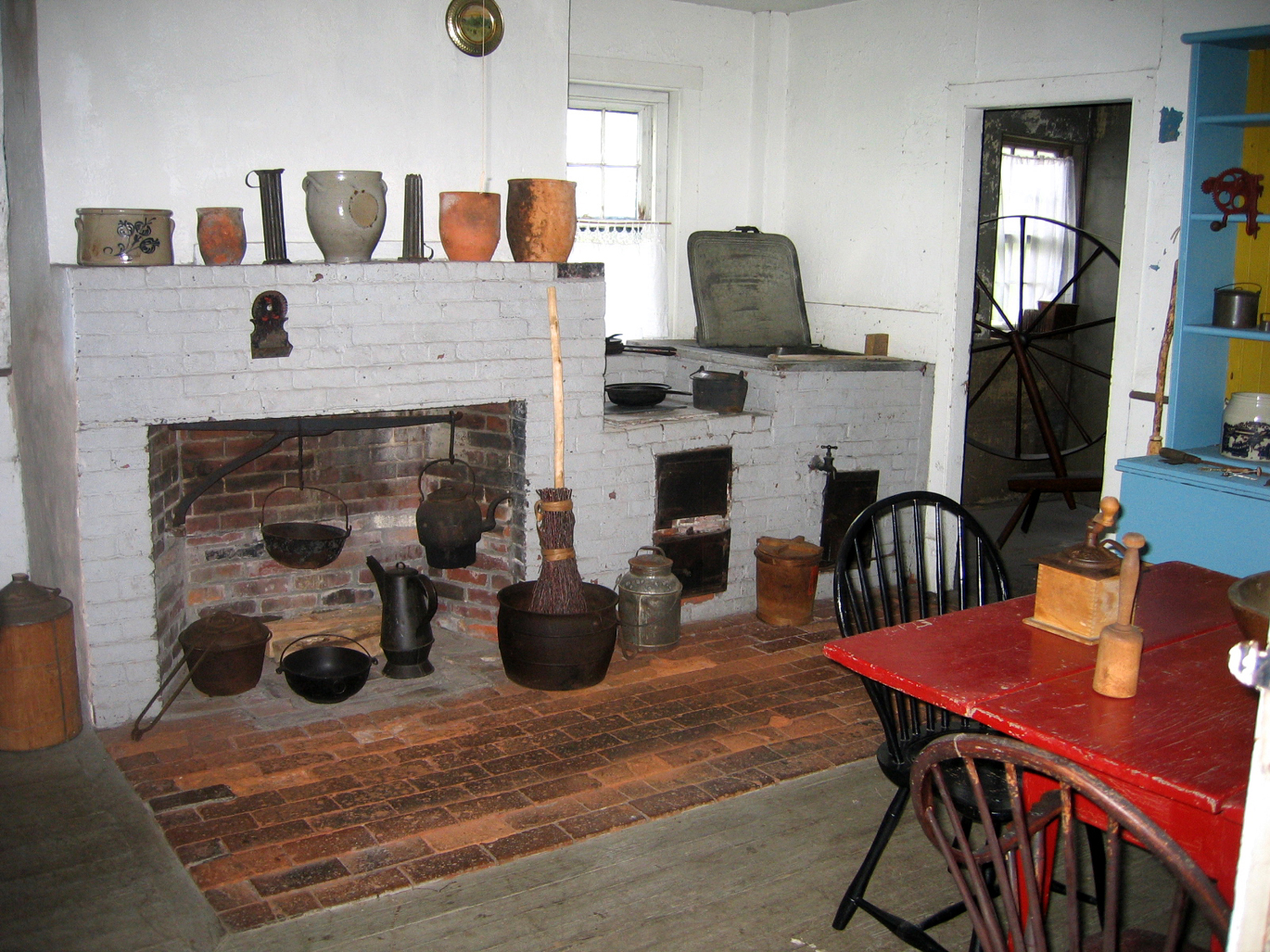By Dorothy A. Clark
JAMAICA PLAIN, MASS. — The Loring-Greenough House is not a traditional historic house museum. In fact, there are those who say it is not a house museum at all. To be sure, visitors can drop in for tours of the 1760 grand Colonial mansion Sunday afternoons or at other times by arrangement. The place is almost always stirring with activities and events befitting its role as a community institution, not just another house museum.

Loring-Greenough House: The main facade (south elevation) is shown with the west elevation to the left. The carriage ell, which contains the summer kitchen, is in the background to the right.
It is the unique stewardship model employed at the Loring-Greenough House that imbues the property with a current-day vitality that maintains its historic character while averting the static atmosphere that can settle over house museums. The owner, the Jamaica Plain Tuesday Club, has operated the house this way since saving it from demolition in 1924.
Management of the Loring-Greenough House is an all-volunteer affair. Established in 1896 during the nationwide women’s club movement, the Tuesday Club — which now admits men — has expanded its community-oriented founding mission to serve as a center for historical, cultural and educational activities.

The drawing room, also called the Best Parlor, displays some changes made in the late Nineteenth and early Twentieth Centuries, such as the hardwood flooring with its register, added with the installation of central heating.
In mid-1924, the Georgian manse had been cleared of its furnishings, readied for razing as its owner David Stoddard Greenough V had sold the property to a group of speculative developers who planned to transform the site for commercial use. It was one of the last surviving Eighteenth Century houses in this Boston neighborhood, and though its occupants had taken their belongings and moved out, the residence had not been stripped of its character-defining features.
The Tuesday Club took on the challenge of saving the house from demolition with the idea to use it as its headquarters and establish it as a community betterment institution. Club members were also keenly aware of the historical significance of the property because of its Colonial-period roots and the role it served during the Revolutionary War.

A glazed door divides the central hall into the main entry area and the narrower rear stair hall. Both spaces are finished with a paneled dado. The main entry hall features late-Nineteenth Century hand blocked scenic wallpaper from Alsace titled “Chateau Country,” which the Tuesday Club installed before 1941. The floor of the rear stair hall is Eighteenth Century pinewood with an oilcloth finish.
Five generations of the Greenough family had owned the homestead, acquiring it in 1784 when it was part of an agrarian estate encompassing at least 60 acres. The estate was created in 1760 by Joshua Loring, who, while having advanced from a privateer for Britain to a commodore in the Royal Navy, was a Massachusetts native and had grown up nearby in Roxbury, Mass. Severely wounded in August 1760 on Lake Ontario during the French and Indian War, the disabled Loring retired to his Jamaica Plain estate, living the life of a gentleman farmer, in part on his pension from the British government.
The Lorings resided there for 14 years but as Colonial dissent increased, the Loyalist retired commodore fled with his family to Boston, seeking the protection of British forces. The Lorings then made their way to Nova Scotia and finally to England. They never returned here though it seems the commodore thought they would as many belongings were left behind in the house. The commodore had also bricked up his wine cellar, which was discovered in the mid-1800s during the installation of an iron vault by David S. Greenough III for the family’s silver.

Also called the Southwest chamber, this second-floor room is the most formal bedroom space. The paneled chimney breast, dado, dentil crown molding and window seats are part of the original construction. Above the fireplace is a copy of the bridal portrait of Hannah Loring Winslow, the daughter of Commodore Joshua Loring and his wife, Mary Curtis Loring, painted by John Singleton Copley in 1763. The original is in the collection of the Detroit Institute of Arts.
With the Lorings gone, the property became the headquarters for Nathanael Greene, a major general in the Continental Army, in the spring of 1775. On June 23, 1775, the Massachusetts Provincial Congress seized the property and used the house as an infirmary. The property remained under military control until March 1776, after which it was confiscated by the state, which leased and later sold it. On April 5, 1784, a wealthy widow named Anne Doane bought the estate in anticipation of her marriage to David Stoddard Greenough I.
The architect of Loring’s two-and-a-half story, grand-style residence is unknown. The timber-frame, clapboard-sheathed structure is capped with a hipped roof and dormers, which provided light in the garret servants’ quarters. Although the house faces south, its design gives the appearance of three façades, with the west and north elevations featuring pedimented center entrances.

David Stoddard Greenough I (1752–1826) had this summer kitchen constructed in 1811. Now referred to as the ell, the two-story structure also contained a wood house and guest carriage space. Beneath the kitchen is a root cellar, smoke chamber and cistern. The top floor was used as servant quarters.
The interior was designed with the traditional Georgian floor plan containing a center hall with two tiers of rooms on either side, all with fireplaces. Much of the original material from the Lorings’ residency is still intact, such as paneling, finishes, doors and hardware. The 12-panel front door with its HL hinges and massive rim lock date to the Eighteenth Century.
Successive generations of Greenoughs made various modifications and upgrades to the house. Subdivision has also whittled the once 60-plus-acre estate down to its present size of just under two acres.
Next year, the Jamaica Plain Tuesday Club will honor the 300th birthday of Commodore Joshua Loring, who was born on August 3, 1716.
The Loring-Greenough House at 12 South Street was added to the National Register of Historic Places in 1972 and designated a Boston landmark in 1999. For information, http://loring-greenough.org.
Dorothy A. Clark is a docent and member of the Jamaica Plain Tuesday Club.

